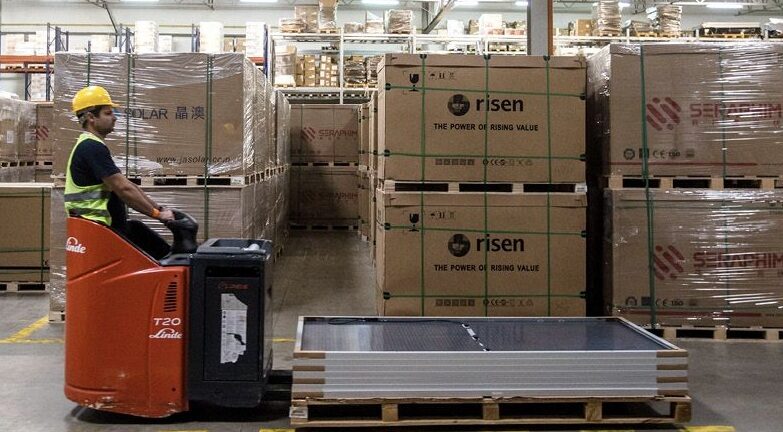A member of the Netherlands government has said moves to exclude renewable energy projects in grid-congested parts of the country from public subsidy has not dampened enthusiasm among solar developers.
Minister for economic affairs and climate policy, Eric Wiebes, wrote in a letter to parliament: “With €9.06 billion in applications [for subsidy] on an available budget of €5 billion, there is a good chance that the budget can be fully utilized.
The minister explained the autumn round of this year’s SDE+ (Stimulering Duurzame Energieproductie) renewable energy incentive program had for the first time included a ‘transportindicatie’ – a transport indication – removing eligibility for subsidies in regions which suffer constraints on electricity grid access.
Grid constraints
In late November three organizations, including PV industry lobby group Holland Solar, asked the Dutch parliament to take action over worsening grid connection problems for renewables projects in the Netherlands. According to the petitioners, around 700 MW of solar and wind project generation capacity allocated under the SDE+ program was in danger of losing payments due to missed grid connection deadlines caused by lack of network capacity.
An update from enterprise agency the Rijksdienst voor Ondernemend Nederland (RVO) – which manages the incentive scheme – said 7,525 renewables facilities with a total generation capacity of 6,223 MW had applied for funding in the autumn round.
“This subsidy round has therefore shown that the transport indication has not had an inhibiting effect on the number of applications,” Minister Wiebes added. “In contrast, network operators have gained a better understanding of the number of projects that are still in the pipeline in the various regions and market parties have more insight into the locations where there is space on the electricity grid.”
Cost-effective PV
The Ministry of Economy said solar made up 74.7% of the facilities pre-selected for consideration for financial assistance. According to the RVO, the solar plants proposed would require only 48.8% of the available funds. By contrast, wind power projects – which comprise 10.2% of the contracted capacity applying for SDE+ support – would need 15.4% of the budget.
The ministry said solar projects with a total generation capacity of 4,649 MW are under consideration and the RVO indicated wind projects with a capacity of 640 MW are in the running alongside 357 MW of biomass generation, with the 570 MW balance made up from other clean energy technologies.
The solar projects proposed, the RVO stated, would require €4.42 billion of public backing with the wind farms needing €1.39 billion.
This content is protected by copyright and may not be reused. If you want to cooperate with us and would like to reuse some of our content, please contact: editors@pv-magazine.com.




1 comment
By submitting this form you agree to pv magazine using your data for the purposes of publishing your comment.
Your personal data will only be disclosed or otherwise transmitted to third parties for the purposes of spam filtering or if this is necessary for technical maintenance of the website. Any other transfer to third parties will not take place unless this is justified on the basis of applicable data protection regulations or if pv magazine is legally obliged to do so.
You may revoke this consent at any time with effect for the future, in which case your personal data will be deleted immediately. Otherwise, your data will be deleted if pv magazine has processed your request or the purpose of data storage is fulfilled.
Further information on data privacy can be found in our Data Protection Policy.